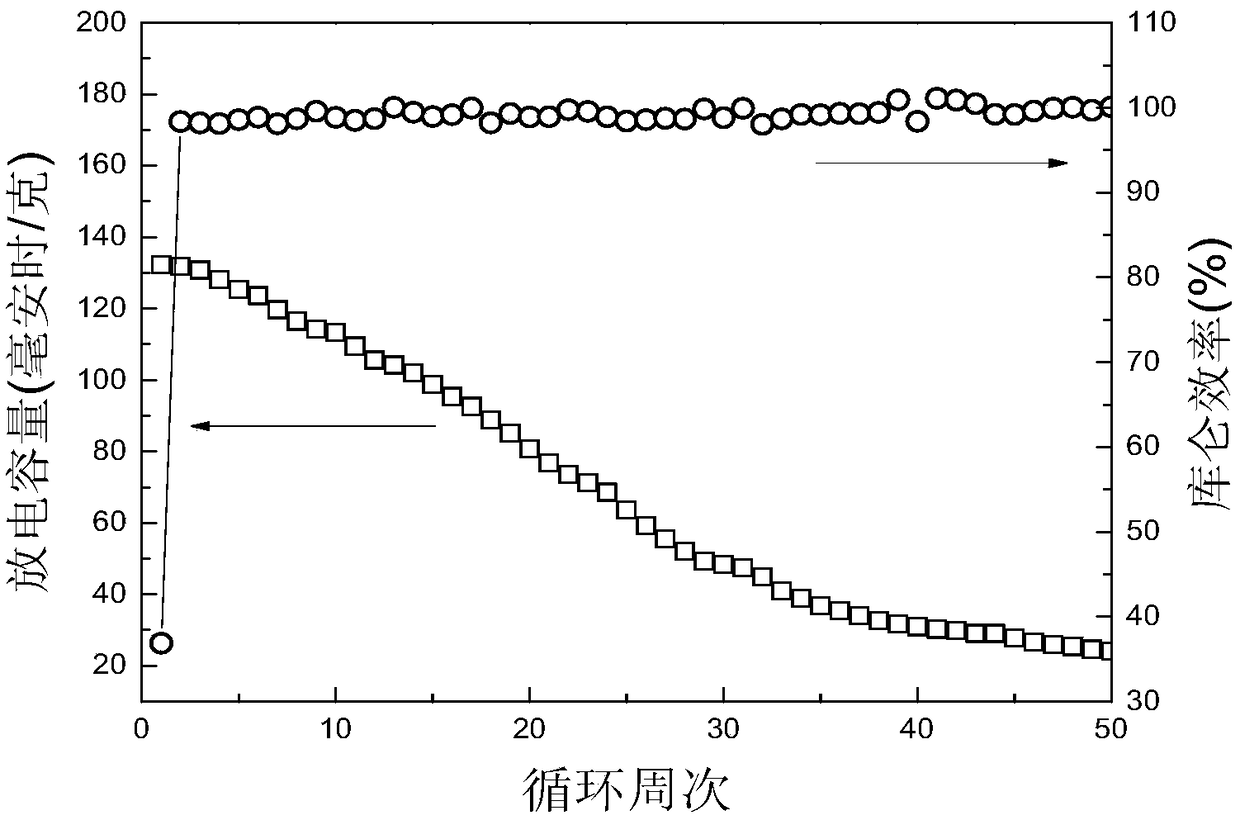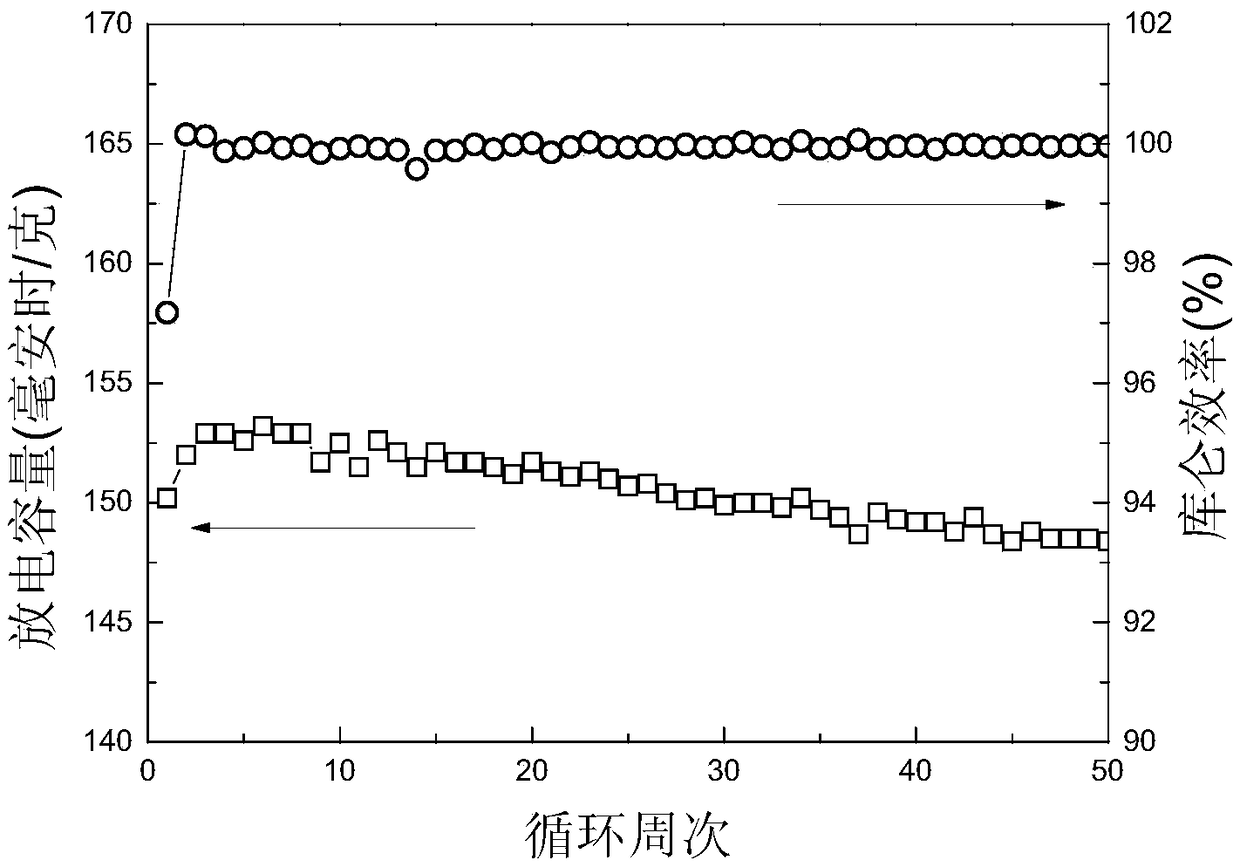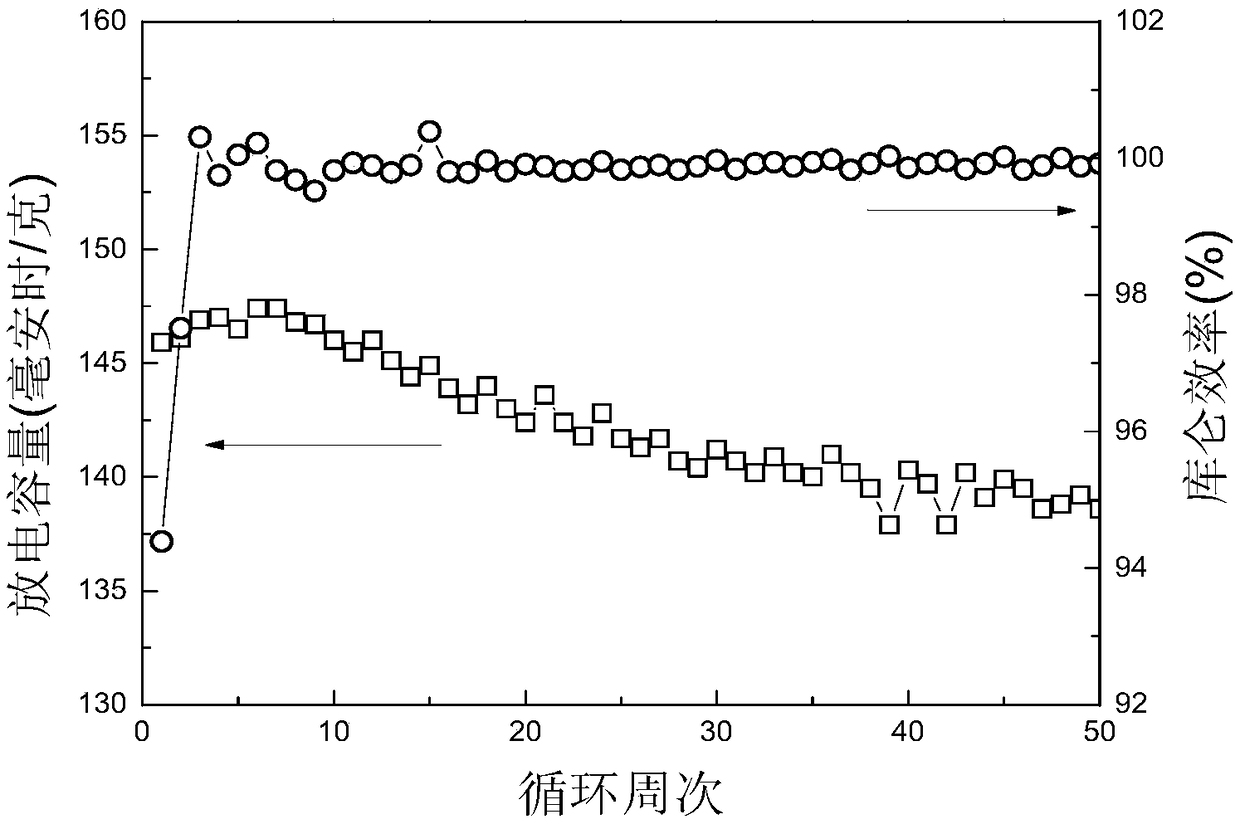Compound membrane for lithium battery, preparation method and application thereof
A technology of composite diaphragm and lithium battery, which is applied in the direction of lithium battery, nanotechnology for materials and surface science, secondary battery, etc., can solve the problems of fragility, SEI rupture, low conductivity, etc., to inhibit growth and reduce Chemical reactions, effects of high energy density
- Summary
- Abstract
- Description
- Claims
- Application Information
AI Technical Summary
Problems solved by technology
Method used
Image
Examples
Embodiment 1-10
[0063] 1. Preparation of Vulcanized Polyacrylonitrile Ion-Conductive Particle Coating
[0064] (a) uniformly mix sulfur element (S) with polyacrylonitrile (PAN) particles purchased from aldrich company, and react in an argon tube furnace at 300° C. to obtain sulfurized polyacrylonitrile ion-conducting particles; wherein, The weight-average molecular weight of polyacrylonitrile particles is 12,000g / mol, the average particle diameter is 10nm, and the mass ratio of sulfur element and polyacrylonitrile is respectively 1:2, 1:1, 2:1, 3:1 and 4: 1.
[0065] (b) After uniformly mixing the vulcanized polyacrylonitrile ion-conducting particles and polyvinylidene fluoride, add N-methyl-2-pyrrolidone (NMP) solvent to prepare a slurry; wherein, by weight of the slurry, the The amount of sulfurized polyacrylonitrile ion-conducting particles is 30%, the amount of polyvinylidene fluoride is 10%, and the amount of N-methyl-2-pyrrolidone is 60%.
[0066] (c) Squeegee-coat the slurry obtained...
Embodiment 11-50
[0092] 1. Preparation of Composite Separator
[0093] Composite membranes were prepared using the methods described in Examples 1-10. Table 2 shows the types of polymer substrate films, and Table 3 shows the types of the positive-side inorganic ceramic particle coating and / or polymer modification layer.
[0094] Table 2 Polymer substrate membrane materials
[0095]
[0096]
[0097] Table 3 Inorganic Ceramic Particle Coating and / or Polymer Modification Layer Particles on the Positive Electrode Side
[0098]
[0099] Table 4 has listed polymer substrate film type, thickness in the composite diaphragm of embodiment 11-50, the raw material ratio before the sintering of negative electrode side vulcanization polyacrylonitrile ion-conductive particle coating, particle size, coating thickness, positive electrode side Inorganic ceramic particle coating or polymer modification layer type, coating thickness, and total porosity of the final composite separator.
[0100] The c...
PUM
| Property | Measurement | Unit |
|---|---|---|
| thickness | aaaaa | aaaaa |
| thickness | aaaaa | aaaaa |
| thickness | aaaaa | aaaaa |
Abstract
Description
Claims
Application Information
 Login to View More
Login to View More - R&D
- Intellectual Property
- Life Sciences
- Materials
- Tech Scout
- Unparalleled Data Quality
- Higher Quality Content
- 60% Fewer Hallucinations
Browse by: Latest US Patents, China's latest patents, Technical Efficacy Thesaurus, Application Domain, Technology Topic, Popular Technical Reports.
© 2025 PatSnap. All rights reserved.Legal|Privacy policy|Modern Slavery Act Transparency Statement|Sitemap|About US| Contact US: help@patsnap.com



